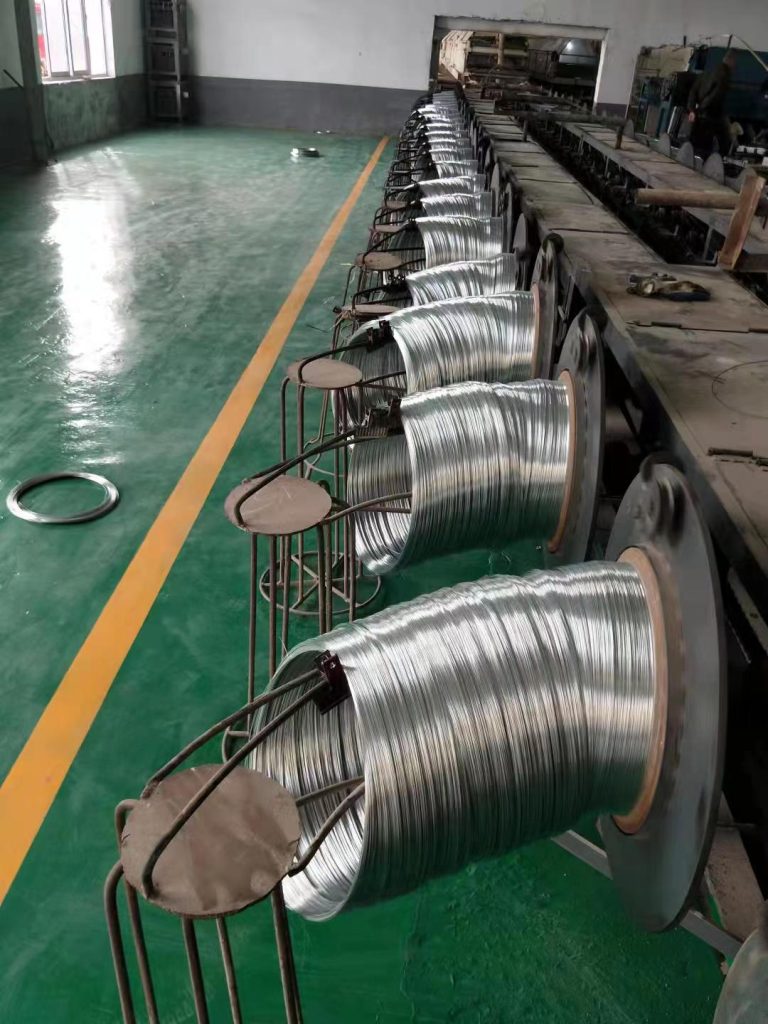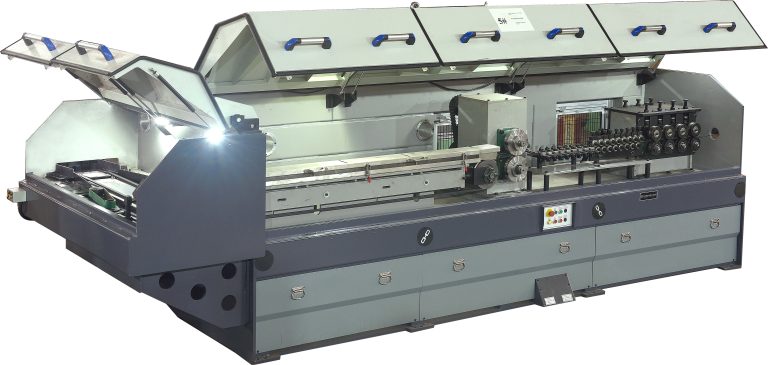The Future of Copper and Zinc Wire Production: Trends and Innovations
Zinc Wire Production Line has been a crucial part of the manufacturing industry for decades. These metals are essential for a wide range of applications, from electrical wiring to plumbing and construction. As technology continues to advance, the demand for high-quality copper and zinc wire is only expected to increase. In response to this growing demand, manufacturers are constantly looking for ways to improve their production processes and create more efficient and cost-effective products.

One of the most significant trends in copper and zinc wire production is the shift towards automation. Automation allows manufacturers to increase their production capacity while reducing labor costs and improving overall efficiency. By implementing automated production lines, manufacturers can produce wire at a faster rate and with greater precision than ever before. This not only helps to meet the growing demand for copper and zinc wire but also ensures that products are of the highest quality.
Another key trend in copper and zinc wire production is the use of advanced materials and technologies. Manufacturers are constantly looking for ways to improve the performance and durability of their products, and this often involves incorporating new materials and technologies into the production process. For example, some manufacturers are now using high-strength alloys to create wire that is more resistant to corrosion and wear. Others are exploring the use of nanotechnology to create wire with enhanced electrical conductivity and thermal properties.
In addition to automation and advanced materials, sustainability is also a major focus in the copper and zinc wire production industry. As concerns about the environment continue to grow, manufacturers are looking for ways to reduce their carbon footprint and minimize waste. This has led to the development of more sustainable production processes, such as recycling scrap metal and using renewable energy sources. By adopting these practices, manufacturers can not only reduce their impact on the environment but also improve their overall efficiency and competitiveness in the market.
One of the most exciting innovations in copper and zinc wire production is the development of smart wire technology. Smart wire is wire that is embedded with sensors and other electronic components, allowing it to communicate with other devices and systems. This technology has a wide range of applications, from monitoring the performance of electrical systems to controlling the flow of water in plumbing systems. By incorporating smart wire into their products, manufacturers can create wire that is not only more efficient and reliable but also more versatile and adaptable to a wide range of applications.
Overall, the future of copper and zinc wire production is bright, with manufacturers continuing to innovate and improve their processes to meet the growing demand for high-quality products. By embracing automation, advanced materials, sustainability, and smart wire technology, manufacturers can create wire that is more efficient, durable, and environmentally friendly than ever before. As technology continues to advance, the possibilities for copper and zinc wire production are endless, and the industry is sure to continue to evolve and grow in the years to come.

Benefits of Using Copper and Zinc Wire in Industrial Applications
Copper and zinc wire are two essential materials used in various industrial applications due to their unique properties and versatility. The production of copper and zinc wire involves a complex process that requires precision and expertise. A copper and zinc wire production line is a crucial component in the manufacturing process, ensuring the quality and consistency of the final product.
One of the key benefits of using copper and zinc wire in industrial applications is their excellent conductivity. Copper is known for its high electrical conductivity, making it an ideal material for wiring and electrical components. Zinc, on the other hand, is often used as a coating for steel wire to protect against corrosion. When combined, copper and zinc wire can provide a reliable and efficient solution for a wide range of industrial applications.
In addition to their conductivity, copper and zinc wire also offer excellent strength and durability. Copper wire is known for its high tensile strength, allowing it to withstand heavy loads and harsh conditions. Zinc wire, when used as a coating, can provide added protection against corrosion and rust. This combination of strength and durability makes copper and zinc wire a popular choice for industrial applications where reliability is essential.
Another benefit of using copper and zinc wire in industrial applications is their versatility. Copper wire can be easily shaped and molded into various forms, making it suitable for a wide range of applications. Zinc wire, when used as a coating, can be applied to different materials to provide protection against corrosion. This versatility allows manufacturers to customize copper and zinc wire to meet their specific needs and requirements.
Furthermore, copper and zinc wire are environmentally friendly materials that can be recycled and reused. Copper is a highly recyclable material that can be melted down and reformed into new products without losing its properties. Zinc, when used as a coating, can also be recycled and reused to minimize waste and reduce environmental impact. By using copper and zinc wire in industrial applications, manufacturers can contribute to sustainable practices and reduce their carbon footprint.

Overall, the benefits of using copper and zinc wire in industrial applications are numerous. From their excellent conductivity and strength to their versatility and recyclability, copper and zinc wire offer a reliable and efficient solution for a wide range of manufacturing processes. A copper and zinc wire production line plays a crucial role in ensuring the quality and consistency of these materials, making them an essential component in the industrial sector. Whether used for wiring, coating, or other applications, copper and zinc wire continue to be a popular choice for manufacturers looking for reliable and sustainable materials.
How to Optimize Efficiency in Copper and Zinc Wire Production
Copper and zinc wire production is a crucial process in various industries, including electronics, construction, and automotive. To meet the increasing demand for these essential materials, manufacturers must optimize efficiency in their production lines. By implementing strategic measures and utilizing advanced technology, companies can streamline their operations and enhance productivity.
One key aspect of optimizing efficiency in copper and zinc wire production is investing in a state-of-the-art production line. A modern production line equipped with advanced machinery and automation technology can significantly improve the speed and accuracy of the manufacturing process. By reducing manual labor and minimizing human error, companies can increase output and ensure consistent quality in their products.
In addition to upgrading equipment, companies can also optimize efficiency by implementing lean manufacturing principles. Lean manufacturing focuses on eliminating waste and maximizing value in the production process. By analyzing workflow, identifying bottlenecks, and implementing continuous improvement initiatives, companies can streamline operations and reduce production costs. This approach not only enhances efficiency but also improves overall quality and customer satisfaction.
Another crucial factor in optimizing efficiency in copper and zinc wire production is workforce training and development. Well-trained employees are essential for ensuring smooth operations and maintaining high productivity levels. By providing comprehensive training programs and ongoing professional development opportunities, companies can empower their employees to perform at their best and contribute to the success of the production line.
Furthermore, companies can optimize efficiency by implementing a robust quality control system. Quality control measures help identify defects and inconsistencies in the production process, allowing companies to address issues promptly and prevent costly rework. By monitoring product quality at every stage of production and implementing corrective actions when necessary, companies can ensure that their copper and zinc wire meet industry standards and customer expectations.
To further enhance efficiency, companies can also leverage data analytics and predictive maintenance technology. By collecting and analyzing data from production processes, companies can identify trends, optimize workflows, and make informed decisions to improve efficiency. Predictive maintenance technology can also help companies anticipate equipment failures and schedule maintenance proactively, reducing downtime and maximizing production uptime.
In conclusion, optimizing efficiency in copper and zinc wire production is essential for companies looking to stay competitive in today’s fast-paced market. By investing in modern production lines, implementing lean manufacturing principles, providing workforce training, implementing quality control measures, and leveraging data analytics and predictive maintenance technology, companies can streamline their operations, increase productivity, and deliver high-quality products to their customers. By continuously striving for improvement and innovation, companies can position themselves for long-term success in the dynamic world of copper and zinc wire production.






